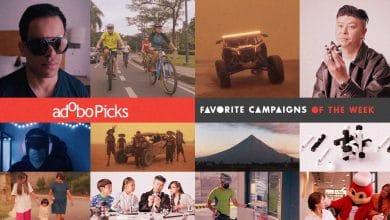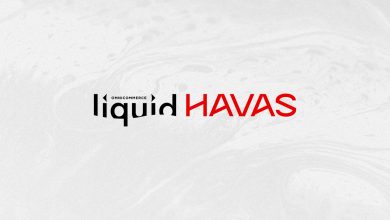GLOBAL – SEPTEMBER 12, 2011: In this exclusive Q&A with adobo magazine, Taco Bell’s Digital Lead for
Do you oversee all of Taco Bell’s digital platforms? How is the work split between the team and the agency?
Yes, I oversee Taco Bell’s Digital Marketing efforts which includes our social media efforts, website, mobile site, mobile apps, in-restaurant digital screens, t cards and future loyalty programs. We have a dedicated team in-house that manages all these initiatives and leads the strategic direction for our digital marketing efforts. We partner with our agencies quite a bit when the time comes to develop and execute the creative that lives on these digital channels.
Can you tell us the story behind Super Delicious Ingredient Force?
Super Delicious Ingredient Force (SDIF) was created to engage with our core demo target, 18-34 heavy fast food user. From a their standpoint, Taco Bell has unique crave-able tastes that differentiate it from the majority in the category. We leveraged these in creating this series of old-school comic style videos to engage with our fans in a relevant way. It was a good opportunity for our fans to experience the personality of our brand and connect with the brand beyond the food.
Our agency created the series and the characters. While our primary objective was to produce something that would enable us to further engage with our fans, we saw an ancillary benefit of a spike in our Facebook fan base. It gave our fans a reminder of the brand and many of them chose to “like” us afterwards. During the series, the time people spent engaging with Taco Bell online skyrocketed from 2,000 hours to 77,000, brand engagement had grown by 37 times, and Taco Bell’s Facebook fans went from 900,000 to a whopping 4.6 million.
How did users engage with the characters?
Users engaged with the characters in a variety of ways. Some of them connected with the characters on Facebook. Sometimes the characters would tweet to our fans and sometimes they even engaged with them in-person. One year the characters showed up at Comi-Con, one of the largest, nationwide comic conventions, so that was a lot of fun for our fans.
Is there a future for SDIF?
The digital realm has exponentially grown since we first launched SDIF, so we have to evaluate how we go about engaging with our fans amidst the proliferation of digital channels. We continually evaluate the digital landscape and do what we can to stay relevant with our fans. While there are definitely benefits to producing online video content, it’s not our primary method from which to engage with consumers.
Did the Lawyers vs. Taco Bell issue affect traffic or interactions on the brand’s digital spaces?
Negative publicity always elicits reactions, so we naturally saw more traffic and interactions with the brand during the lawsuit. However, since the lawsuit brought upon Taco Bell was completely false and unfounded, it was reassuring to see many of our fans stand by us and publicly support us. Given that we had already invested in the digital space and built relationships with our fans prior to this event, we were able to openly and honestly communicate with fans and let them know the truth about what was going on.
Digital isn’t always the place for honest conversation. How are you as a brand changing this?
We believe that digital is THE place for honest communication. It’s critical that we as a brand remain authentic and transparent in the digital space, particularly with regard to social media. It’s an expectation that consumers have for brands nowadays and in order for us to have a good relationship with our consumers, we need to meet these expectations.
What are your learnings from the online behavior of Taco Bell’s target audience?
Fans who take the time to interact with brands are expecting relevant engagement from the brands. Therefore, it’s critical that the content produce meaningful conversations with your target. Due to the democratization of technology, consumers are always connected and constantly bombarded with messages in every way. In order for your consumers to pay attention to your brand, you have to offer something of value for their time. This doesn’t always mean an offer or discount, but rather, something that is worth their time.
What are the leading digital touchpoints for the brand? Are certain sites better in driving engagement toward particular objectives?
Certain sites are absolutely better for driving engagement than others, but none clearly stands head and shoulders above the rest. For us, it all depends on the objective of the program or campaign. Some sites lend itself for better viewing engagement, while others for more “discover” type engagement. The great thing is that we have a strong robust team that evaluates which blend of sites work best to meet key brand and project-specific objectives.
In your experience, how does owned media lead to earned media?
This is interesting because we really don’t separate the two. We look at all owned media as an opportunity for earned media. We have a team of passionate folks that have a great deal of pride for their work, so anything that we share with our customers, we would want our customers to proudly share as well.
What are the factors affecting the effectivity of online promotions?
This greatly varies. It all depends on the promotion. We don’t do a lot of online promotions. In fact, we mainly use digital to drive brand engagement, which helps build relationships with our consumers and drive long-term brand preference.
Aside from ringtones, a mobi-site and a store locator app, how is the brand engaging via mobile? What can we look forward to in this area?
Mobile is the new frontier. Many consumers, particularly millennials, would more likely go home if they left their mobile phone rather than their wallet. This says a lot about how consumer behaviors have changed. Mobility is key and it’s important that brands let consumers interact and engage with them whenever, wherever they want. This is why we are definitely investing more in the mobile space. We are actually in the midst of revamping our mobile app, planning for greater mobile presence and enhancing our overall mobile experience.
Ronalee Zárateâ€Bayani discovered her passion for consumer marketing when she first worked for Cocaâ€Cola and launched Cherry Coke in the Philippines market. Prior to Taco Bell, Zárateâ€Bayani dovetailed her entrepreneurial drive and marketing expertise with her zeal for education by serving as Director of Marketing for Global Leadership Adventures. She graduated summa cum laude with a BA in Political Science from the University of California, Irvine and received her MBA from Stanford University, Graduate School of Business. Born in the US to Filipino parents, she currently resides in Orange County, California with her husband and their two kids.









